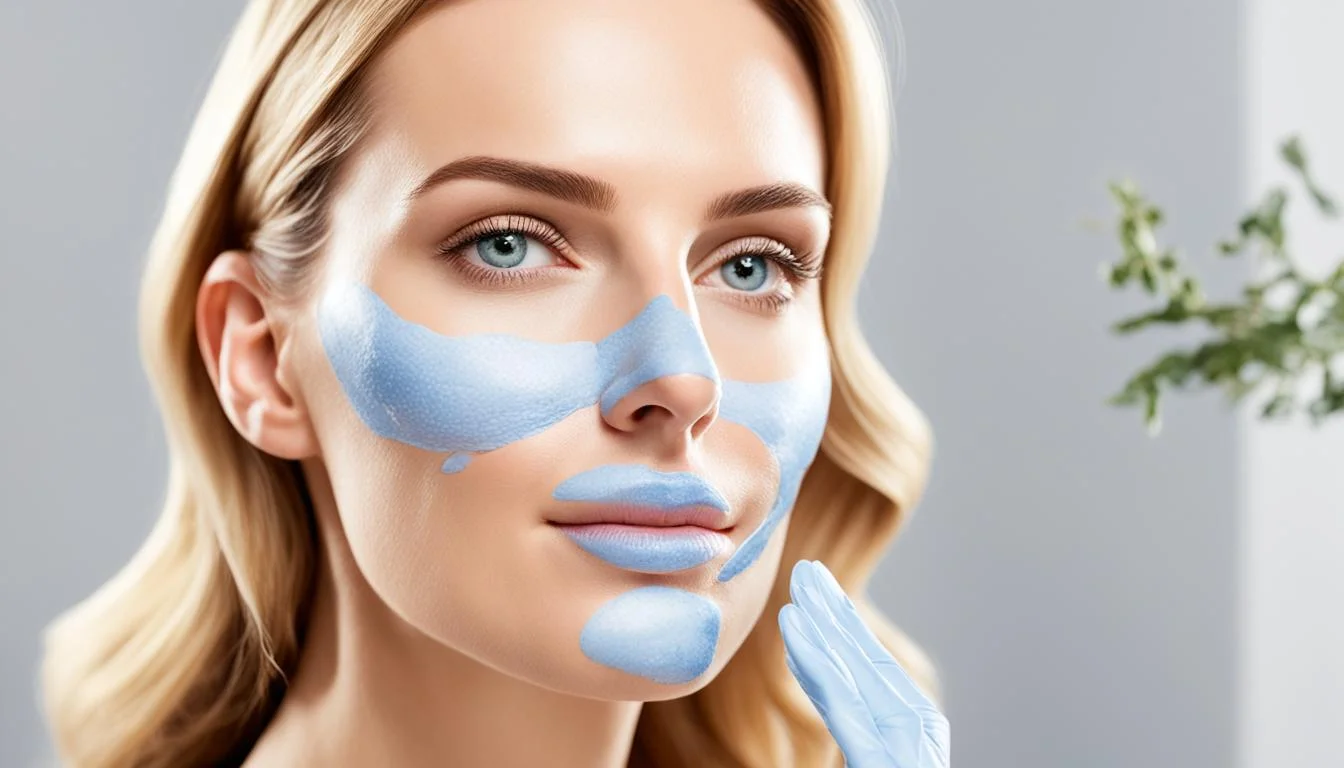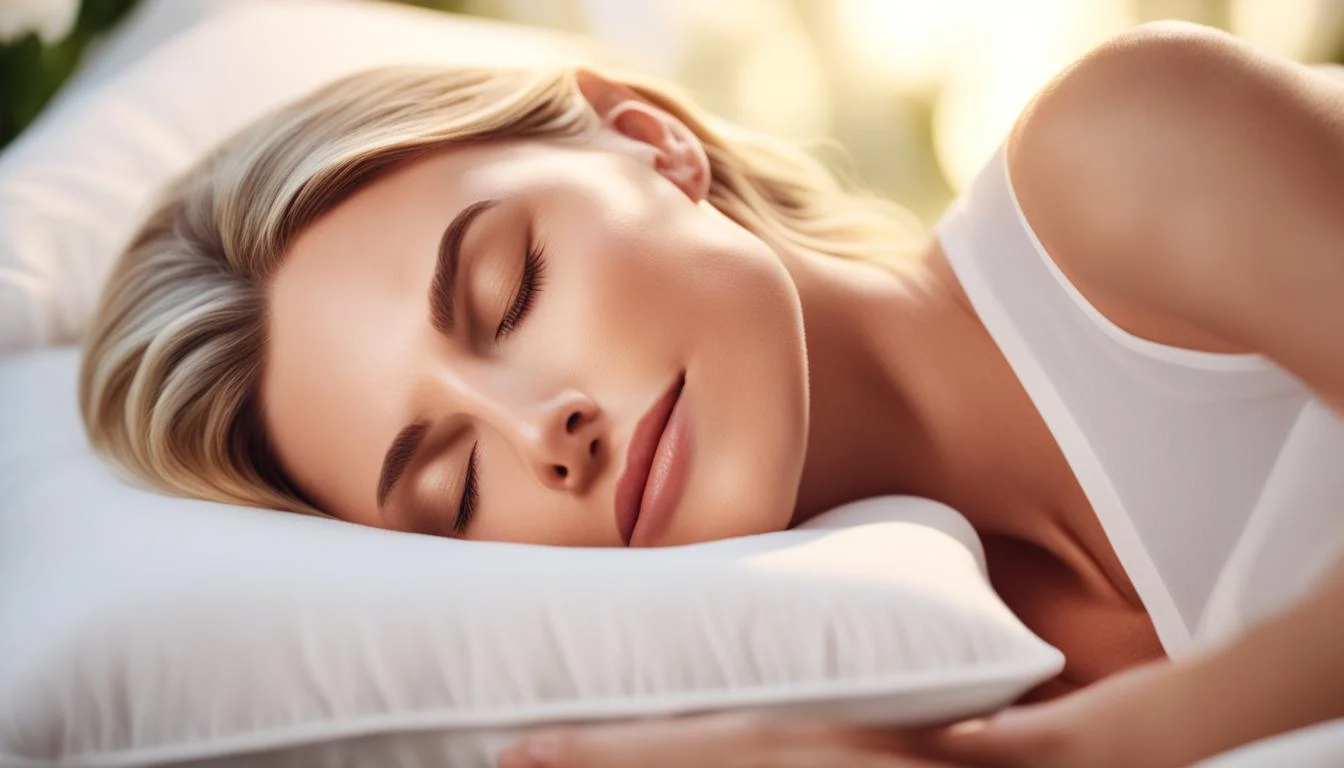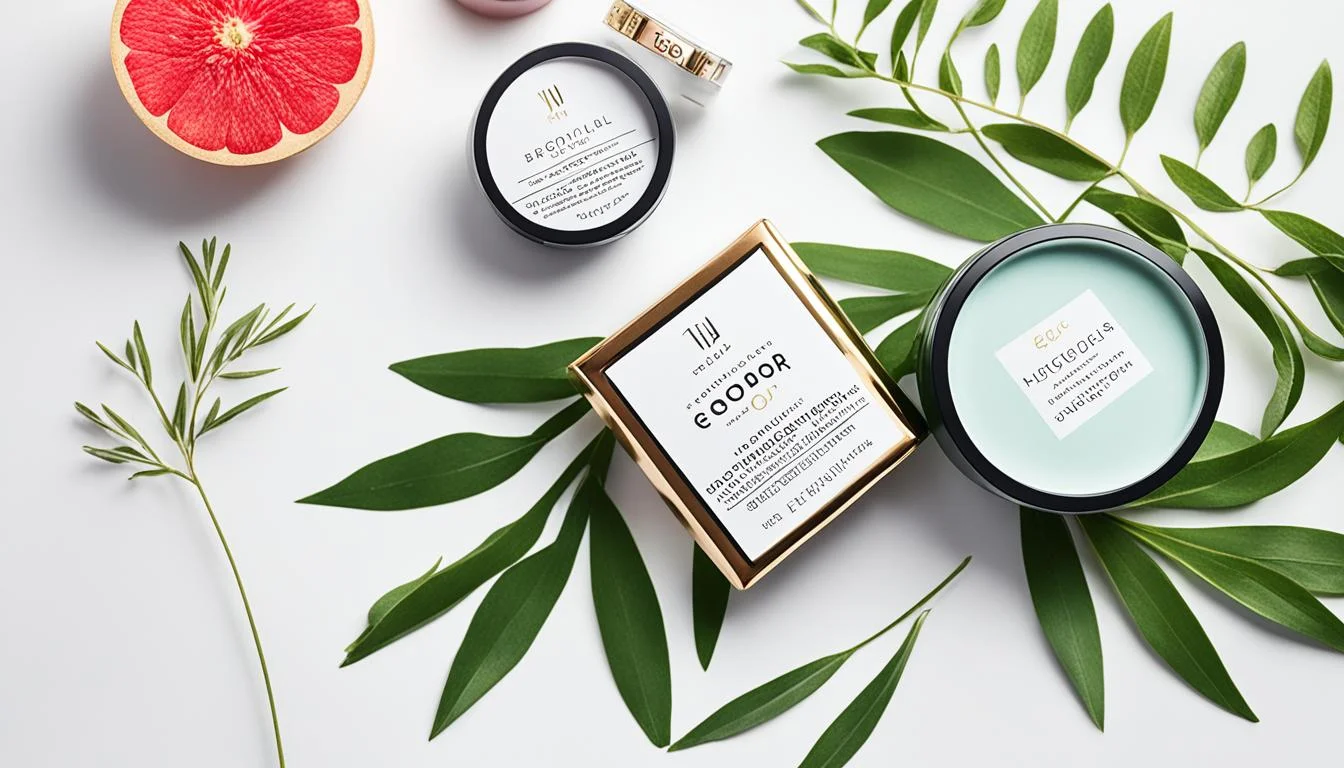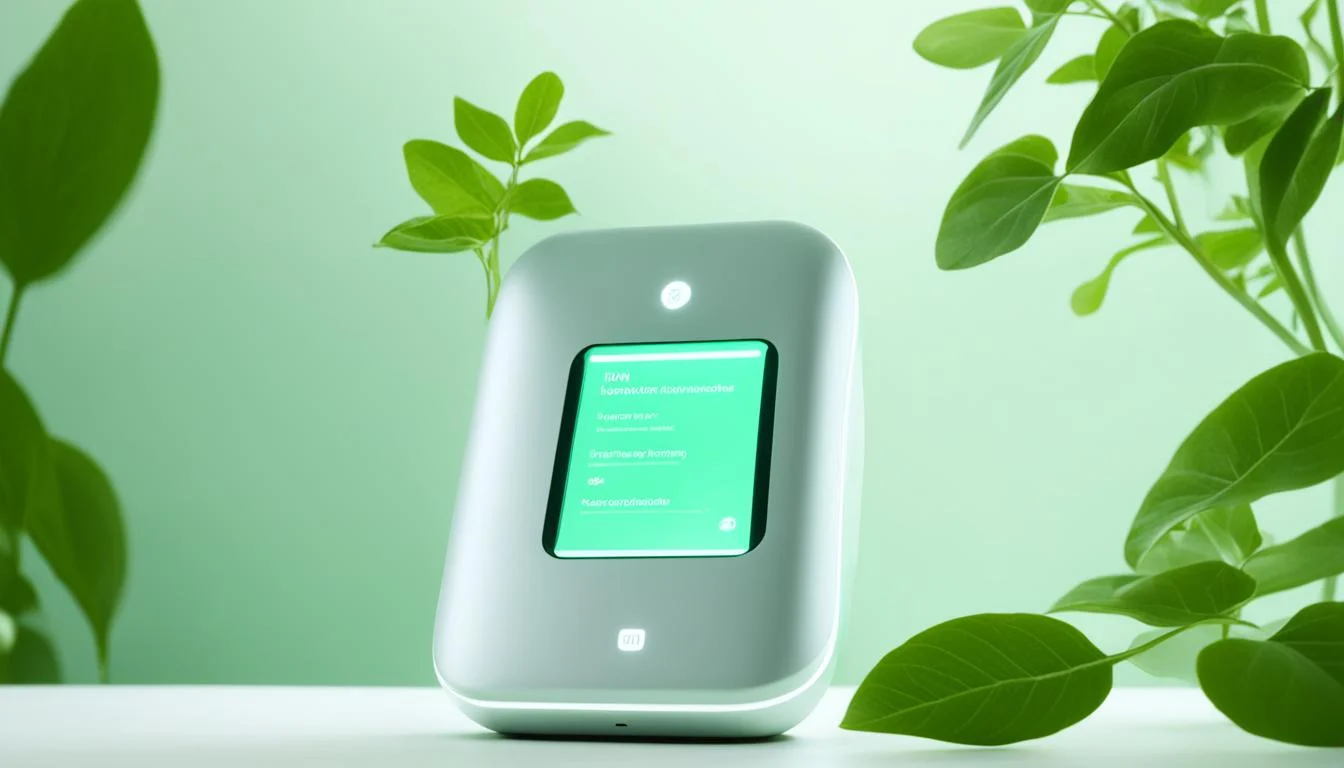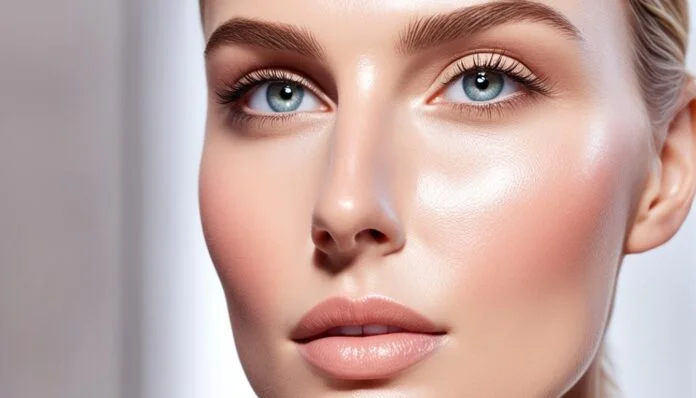
Did you know over 80% of people deal with skin dehydration without knowing it? This fact shows how common moisture imbalance is, affecting our looks and confidence. Getting moisture-balanced skin is key to our skin’s health and looks. A hydrated complexion looks dewy and feels young and strong.
In this guide, we’ll look at how hydration changes our skin, find out what ingredients we need, and give steps for a good hydrating skincare routine. Let’s start our journey to get our skin’s moisture back.
Key Takeaways
- Moisture-balanced skin is crucial for a youthful and radiant appearance.
- Hydration helps to prevent dryness, dullness, and early signs of aging.
- Understanding our skin type is key to choosing the right hydrating products.
- Incorporating powerful ingredients like hyaluronic acid, glycerin, and ceramides can enhance hydration.
- A comprehensive skincare routine boosts our skin barriers and overall health.
Understanding the Importance of Hydration
Hydration is key to keeping our skin healthy. Our bodies are about 60% water, showing how crucial it is for us. Drinking enough water makes our skin look plump and radiant, with better elasticity and fewer lines. It’s important to keep our skin moisturized to avoid dryness and other issues.
Why Hydration is Essential for Skin Health
Hydration is vital for many reasons. It keeps the skin’s protective layer strong. This layer protects us from harm and keeps the skin looking young and elastic. Without enough water, our skin can get dry, tight, and flaky.
Dehydrated skin can also make us produce too much oil, leading to breakouts and uneven skin. Drinking at least eight glasses of water a day helps keep our skin looking good and healthy.
Signs of Dehydrated Skin
Knowing the signs of dehydrated skin helps us change our skincare habits. Look out for:
- Flakiness: A rough texture that suggests a lack of moisture.
- Tightness: A sensation that can be uncomfortable, often felt after cleansing.
- Dullness: A lackluster appearance with a noticeable absence of glow.
- Increased sensitivity: Skin may react negatively to products that typically don’t cause irritation.
Spotting these signs early helps us take better care of our skin. Using products with ingredients like hyaluronic acid and choosing the right moisturizers helps keep our skin hydrated.
Moisture-Balanced Skin: What It Means for You
Understanding moisture-balance is key to having healthy, glowing skin. The skin hydration balance means our skin has the right amount of water. This water is crucial for keeping our skin strong and working right.
When our skin is well-hydrated, it can fight off environmental damage. It also helps our skin heal and look fresh.
The Concept of Skin Hydration Balance
Our skin is made up of 64% water and 15% lipids. This mix forms a barrier that keeps moisture in. But, things like harsh products, weather changes, or hormonal shifts can upset this balance.
Having a good skin hydration balance is important. It stops our skin from getting too dry or too oily.
How to Identify Your Skin Type
To make our skincare work, we need to know our skin type. Things like the weather, our age, and our skin can affect how much moisture it holds. Here are some common skin types and how to spot them:
| Skin Type | Characteristics |
|---|---|
| Normal | Balanced moisture levels with few blemishes. |
| Oily | Shiny appearance, enlarged pores, more prone to acne. |
| Dry | Tight or flaky skin, often feels rough to touch. |
| Combination | Oily T-zone (forehead, nose, chin) with dry cheeks. |
| Sensitive | Prone to redness, irritation, and reactions to products. |
Watching how our skin acts during the day helps us figure out what it needs. For instance, oily skin does well with light, oil-free moisturizers. Dry skin likes richer, creamier products. Knowing our skin type helps us pick the right products for moisture levels.
The Key Ingredients for Hydrated Skin
To get a glowing and hydrated look, we need to focus on certain ingredients. These ingredients boost skin hydration and improve overall health. By adding them to our skincare routine, we make our skin more moist and healthy.
Hyaluronic Acid: The Ultimate Moisture Magnet
Hyaluronic acid is known for its amazing ability to hold up to 1,000 times its weight in water. This makes it a top choice for keeping skin hydrated. It pulls moisture to the skin and keeps it hydrated for a long time. Found in serums and moisturizers, hyaluronic acid gives our skin an instant moisture boost, making it look plump and smooth.
Glycerin and Its Hydrating Properties
Glycerin is a key ingredient in skincare that draws water into the skin. It helps keep our skin hydrated and supports its natural barrier. Working with other ingredients, glycerin helps our skin stay moist all day.
Ceramide-Rich Formulas for Skin Barrier Repair
Ceramides are vital for our skin’s health. They repair and protect the skin barrier, reducing moisture loss. Adding ceramides to our skincare helps create a barrier that keeps moisture in and protects against harm from the environment.
| Ingredient | Key Benefit | Common Uses |
|---|---|---|
| Hyaluronic Acid | Holds up to 1,000 times its weight in water | Serums, moisturizers |
| Glycerin | Attracts moisture to the skin | Lotions, creams |
| Ceramides | Repairs and protects skin barrier | Ointments, creams |
Building Your Hydrating Skincare Routine
Creating a good hydrating skincare routine is key for balanced and moisturized skin. By following these steps, we keep our skin nourished and protected all day.
Step 1: Gentle Cleansing for Hydration
We start with gentle cleansing to remove dirt without taking away our skin’s natural oils. Choose cleansers with ingredients like hyaluronic acid. This keeps moisture in, making our skin feel clean and hydrated.
Step 2: Exfoliation: Preparing Your Skin for Moisture
Exfoliation is important in our routine. Using a chemical exfoliant, like glycolic acid, gently removes dead skin cells. This makes our skin ready to absorb hydrating products better. It also boosts moisture and skin clarity.
Step 3: Toning with Hydrating Ingredients
After cleansing, we tone our skin with toners or mists without alcohol. Pick toners with glycerin to increase hydration and keep our skin fresh and dewy.
Step 4: The Role of Hydrating Serums
Next, we apply hydrating serums with humectants like hyaluronic acid. These serums deeply hydrate our skin, keeping it smooth and plump.
Step 5: Choosing the Right Moisturizer
A good moisturizer is key for keeping moisture in. Look for ones that don’t clog pores and have ingredients like ceramides and shea butter. These not only hydrate but also strengthen the skin.
Step 6: Protecting Your Skin with Sunscreen
Finally, we add sun protection to our routine. Using a broad-spectrum sunscreen prevents UV damage, which is key for keeping moisture in and preventing aging. Remember to reapply every two hours for the best protection.

| Step | Action | Key Ingredients |
|---|---|---|
| 1 | Gentle Cleansing | Hyaluronic Acid |
| 2 | Exfoliation | Glycolic Acid |
| 3 | Toning | Glycerin |
| 4 | Hydrating Serums | Hyaluronic Acid, Glycerin |
| 5 | Moisturizing | Ceramides, Shea Butter |
| 6 | Sun Protection | Broad-Spectrum Sunscreens |
Daily Hydration Tips for Skin Confidence
Getting enough water every day is key to feeling good about our skin. Making simple changes in our daily routine can make a big difference. These changes help keep our skin looking great and healthy.
Importance of Drinking Water
Drinking enough water is crucial for keeping our skin hydrated. It helps our body stay hydrated from the inside out. This shows on our skin, making it look less dry, more elastic, and even less wrinkled.
Utilizing a Humidifier in Dry Climates
If you live in a dry area, using a humidifier can really help. It adds moisture to the air, keeping our skin from getting too dry. This is especially important in the winter. Keeping our skin’s moisture barrier strong is key to a healthy, glowing look.
Foods That Promote Skin Hydration
Eating foods that help with skin hydration is also important. Foods like berries, spinach, and avocados are great choices. They not only help keep us hydrated but also protect our skin from damage. Adding these foods to our diet can really boost our skin health.
| Daily Hydration Tips | Benefits |
|---|---|
| Drink plenty of water | Improves skin elasticity and reduces dryness. |
| Use a humidifier | Introduces moisture into the air, preventing skin from drying out. |
| Incorporate hydration-rich foods | Provides nutrients and antioxidants for skin repair. |
Common Mistakes to Avoid in Hydrating Skincare
Getting enough moisture is key for balanced skin. But, we often make mistakes that slow down our progress. Knowing these mistakes helps us improve our skincare.
Over-Exfoliating Your Skin
Exfoliating too much can take away our skin’s moisture. This leads to irritation and weakens the skin’s barrier. We should exfoliate gently, only a couple of times a week, to keep our skin healthy.
Choosing the Wrong Moisturizer for Your Skin Type
Picking the wrong moisturizer can make things worse. For example, oily skin might break out from oil-based moisturizers. Dry skin needs lightweight formulas, not thick creams. It’s important to check our skin and change our moisturizer every six months. This makes sure it still works for us.
Neglecting Sun Protection
Not using sunscreen is a big mistake. Without it, our skin can get damaged and age too fast. This can undo the good work of our moisturizers. Using a broad-spectrum sunscreen with SPF 30 helps protect us from the sun’s harmful rays. This keeps our skin safe and hydrated.

Soothing Serums and Their Benefits
Adding soothing serums to our skincare routine can greatly improve hydration and skin health. It’s important to pick the right serum by looking for ingredients that calm irritation and add moisture. Ingredients like aloe vera, chamomile, and cloudberry extract are great for this, making our skin feel fresh and nourished.
What to Look for in Soothing Serums
- Key Ingredients: Look for serums with ingredients like Centella asiatica, hyaluronic acid, and plant ceramides. These help soothe, hydrate, and fix the skin’s barrier.
- Skin Concerns: Serums can tackle specific skin issues like redness, dryness, and loss of firmness. For example, Dr. Jart+ Cicapair Intensive Soothing Repair Serum helps with redness, while Tower 28 SOS Intensive Rescue Serum is good for sensitive skin.
- Unique Formulations: You can find serums in various forms like lightweight serums, creams, and sprays. This variety lets you choose what suits your needs and preferences.
- Brand Reputation: Choose well-known brands like SkinCeuticals, The Ordinary, and Tata Harper for their quality products.
Incorporating Serums into Your Routine
To get the most out of serums, add them to your skincare routine correctly. Here’s how:
- Start with a gentle cleanse to get your skin ready.
- Use a toner to help the serum absorb better.
- Massage the serum into your skin well, letting it sink in fully.
- Finish with a moisturizer to keep the moisture in.
With regular use, the right soothing serums can lead to skin that looks great and feels healthy. There are many options available, from affordable to luxury, so everyone can find something that fits their budget and skin needs. By understanding what our skin needs, we can use serums to improve our skincare routine.
| Brand | Key Ingredients | Target Concern | Price Range |
|---|---|---|---|
| SkinCeuticals | Thyme, Olive, Cucumber, Hyaluronic Acid | Redness, Dryness | $45.00 – $148.00 |
| The Ordinary | Centella Asiatica, Ceramides, Niacinamide | Barrier Repair | $17.00 – $45.00 |
| Tata Harper | Plant Ceramides | Fine Lines, Wrinkles | $85.00 – $260.00 |
| Aveeno | Oat Extracts | Sensitivity | $45.00 |
| Dr. Jart+ | Cica Extract | Redness, Irritation | $50.00 – $120.00 |
Signature Products to Achieve Moisture-Balanced Skin
Finding the right products is key to getting moisture-balanced skin. We should choose the best moisturizers, like those with Sodium Hyaluronate Acid. This ingredient hydrates and plumps our skin. Witch Hazel is also great as a gentle astringent to balance oil production.
The Skin Thirst Moisturizing Hyaluronic Acid Cream is a standout. It keeps moisture in without making our skin too shiny. It’s perfect for day and night use.
Best Hydrating Moisturizers on the Market
Estee Lauder Soft Creme/Mask is the top moisturizer overall. Neutrogena Hydro Boost Water Gel is great for those who want something light. For budget-friendly options, BYOMA Moisturizing Gel Cream is highly rated for its hydration and feel.
These moisturizers are crucial for keeping our skin looking young and bright.
Top Rated Exfoliators and Cleansers
Choosing the right exfoliators and cleansers is also important for hydrated skin. Gentle scrubs and enzyme-based exfoliators help remove dead skin and keep skin hydrated. Using these products right makes our moisturizers work better.
Effective Sunscreens for Hydrated Protection
Effective sunscreens are a must for keeping our skin hydrated. We need them to protect us from UV rays and keep moisture in. Adding these products to our skincare routine boosts hydration and health, making our skin glow.
FAQ
Why is moisture-balanced skin important for a youthful appearance?
Moisture-balanced skin keeps skin elastic and resilient. It looks dewy and bright, hiding fine lines and aging signs.
What signs indicate that my skin is dehydrated?
Dehydrated skin shows as flakes, tightness, dullness, and more sensitivity. Spotting these signs helps us focus on hydrating our skin.
How do I identify my skin type?
Check how your skin acts at different times. Oily skin shines, while dry skin feels tight or flaky. This helps us choose the right skincare.
What are the best hydrating ingredients for my skincare products?
Use hyaluronic acid, glycerin, and ceramides for hydration. Hyaluronic acid keeps moisture in, glycerin draws water to the skin, and ceramides repair and protect the skin barrier.
How can I build an effective hydrating skincare routine?
Start with gentle cleansing to keep natural oils. Then, exfoliate to clear dead skin. Use a hydrating toner, serums, a right moisturizer, and sunscreen for protection.
What daily habits can support my skin hydration?
Drink lots of water, use a humidifier in dry places, and eat hydrating foods like berries and avocados. These habits help our skincare.
What mistakes should I avoid in my hydrating skincare routine?
Avoid over-exfoliating, picking the wrong moisturizer, and skipping sun protection. These mistakes can dry out and age your skin too fast.
How can soothing serums enhance my hydration routine?
Serums with aloe vera or chamomile add more hydration and calm irritation. Use them after toning and before moisturizing for best results.
What products are recommended for achieving moisture-balanced skin?
Choose top-rated moisturizers with ceramides and hyaluronic acid. Use gentle exfoliators and sunscreens that keep skin moist.

